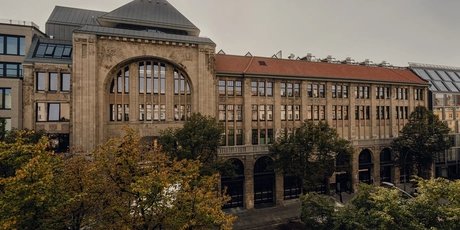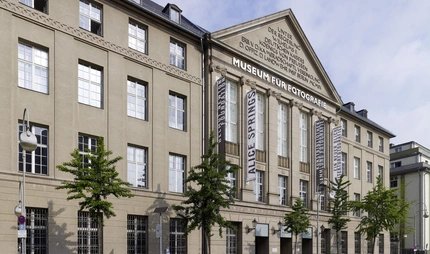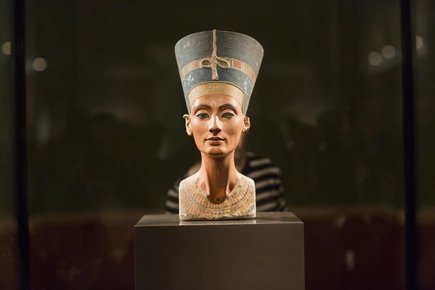
Fotografiska Berlin
Swedish photo museum in Berlin
Fotografiska Berlin opened its doors in September 2023. The Stockholm Museum of Photography moved into a well-known historic building in the heart of Berlin: the former Kunsthaus Tacheles.
One thing becomes immediately clear here: it is a relaxed kind of museum. Fotografiska is not only a lively meeting place, but also allows visitors to bring drinks and dogs into the exhibition rooms.
May 2010 in the Swedish capital Stockholm: a major exhibition of works by Annie Leibovitz, world-famous American photographer, makes a name for itself. It was the first appearance of the new Fotografiska, which soon established itself with further exhibitions. The opening in Stockholm is followed by openings in New York and Tallinn in 2019. The fourth branch has been providing Berlin with exhibitions of contemporary photographic art since 2023.
Showing works - questioning values

Fotografiska is an exhibition centre for contemporary art. Accordingly, the focus is on current topics such as ecological, political and social discourses. Photographs by up-and-coming Berlin photographers as well as renowned artists are on display.
Fotografiska Berlin presents an impressive, multi-layered programme. On display are works that reflect identity, gender, the body, migration, power and digital culture - sometimes documentary, sometimes staged, often experimental. The visual language ranges from intimate portraits to multimedia room installations, sometimes exceeding our expectations of a photography exhibition.
Open cultural centre with gastronomy and concept store
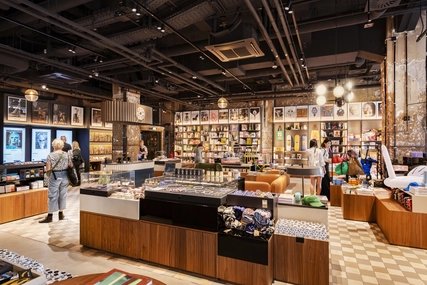
The Fotografiska exhibitions extend over 1,100 square metres. The five-storey historic building in Oranienstraße naturally offers much more space and, with a total area of around 5,500 square metres plus roof terrace, is the ideal place to implement Fotografiska's special concept: In addition to the exhibition spaces, numerous rooms are available for workshops, talks with the artists, concerts, public competitions and events of all kinds. An inviting concept store with design, art and fashion from Berlin labels rounds off the diverse range of offerings and provides visitors with products directly from the Berlin scene.
A new lively centre for culture and encounters has been created in the heart of Berlin, crowned - literally - by the rooftop bar Clara: located in the glass dome of Fotografiska, it offers a magnificent view over the city and is open late into the night. The building also has several other catering outlets such as a bakery and restaurants.
Historic place
Berliners remember it well:
The monumental five-storey building in Oranienburger Straße, an imperial-era structure dating back to 1908 and once one of the largest shopping arcades in the world, caused a sensation after reunification: the dilapidated building had already been largely demolished when the remaining building was occupied by the artists' initiative Tacheles. In the years that followed, the Tacheles became a focal point for controversy and protest actions, for contemporary art, off-theatre and the independent dance scene. After long disputes, the Tacheles was finally vacated in September 2012 and has stood empty ever since. The listed building has been extensively renovated since 2019.
More culture in the neighbourhood
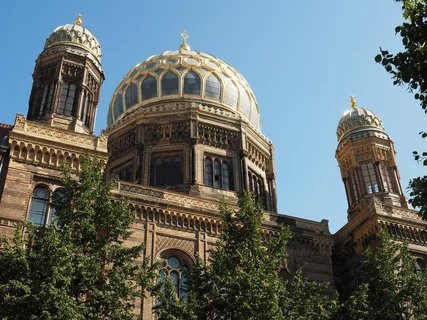
From Oranienburger Straße, it is only a few steps to the major sights of Berlin's historic city centre:
The New Synagogue is also located on Oranienburger Straße. Cross the picturesque Monbijou Bridge to reach the Bode Museum, the northernmost of the five world-famous museums on Museum Island, which is a UNESCO World Heritage Site. The Berlin Cathedral is also located directly on Museum Island and opposite the Humboldt Forum, where exciting exhibitions and extensive collections await you in the Museum of Asian Art and the Ethnological Museum.
From there, you can take the Museum Line, the underground line U5, to other sights quickly and without barriers.
Or you can stroll down the magnificent boulevard Unter den Linden to the Brandenburg Gate. Take note of the many monuments on your walk - Berlin is also the capital of sculptures!
Your visit
You can easily reach Fotografiska by public transport: Take the S-Bahn lines S1, S2, S25 or S26 and get off at Oranienburger Straße S-Bahn station or take the U-Bahn line U6 and get off at Oranienburger Tor U-Bahn station.
Daily 10:00 - 23:00
